
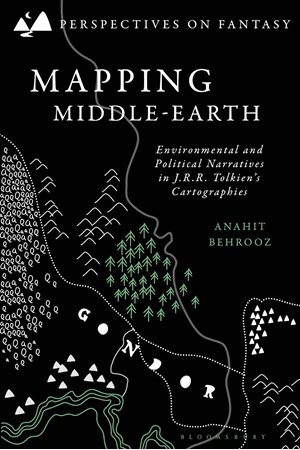 One of many great things about the Perspectives on Fantasy series from the Glasgow University Fantasy Centre is that their contract with Bloomsbury requires the publisher to produce paperback editions at affordable prices. You have to wait a year from initial publication for the paperback to appear, but once it has you should be able to get it for around £25. Or, having waited a year already, you can wait a little longer for Bloomsbury to have a sale. Which is how I ended up getting a copy of Mapping Middle Earth for just over £20.
One of many great things about the Perspectives on Fantasy series from the Glasgow University Fantasy Centre is that their contract with Bloomsbury requires the publisher to produce paperback editions at affordable prices. You have to wait a year from initial publication for the paperback to appear, but once it has you should be able to get it for around £25. Or, having waited a year already, you can wait a little longer for Bloomsbury to have a sale. Which is how I ended up getting a copy of Mapping Middle Earth for just over £20.
The book is the product of research done by Anahit Behrooz for her PhD. As the title suggests it examines Tolkien’s use of maps in his Legendarium. In many ways it builds on Stefan Ekman’s ground-breaking study of fantasy maps, Here be Dragons. Behrooz, however, is interested in only a very small, albeit very famous, subset of the fantasy genre, and that allows her to go into much greater depth.
I should start, as Behrooz does, by noting that all maps are political. We should all know that. I presume that most of you know that the well-known Mercator projection of Earth over-states the size of land at the poles, and under-states the size of land at the equator. That has been all over social media of late, as people have gleefully pointed out that Greenland is nowhere near as bigly as Donald Trump thinks it is.
Behrooz situates Tolkien’s maps between two traditions: the mediaeval map (such as the famous Hereford Mappa Mundi), and the modern map (typified by the UK’s Ordnance Survey). Mediaeval European maps are mostly religious in nature. They generally have Jerusalem at the centre, and are oriented towards the East, where the Garden of Eden was believed to lie. Tolkien’s maps of Middle Earth in the First and Second Age are much more like mediaeval maps. Prior to the sinking of Númenor, Middle Earth was flat and it was possible to travel directly to Valinor. So the heaven of Middle Earth was literally on the map.
The Ordnance Survey, as the name suggests, was originally a military project. Specifically it was created by the English army to help them find their way around the Scottish highlands, all the better to round up any Jacobite resistance. Military maps need to be highly accurate, and while that has been a great boon for later generations of hikers, we still have to remember that the maps were created as a tool of military conquest.
Personally I think that Behrooz has missed a trick here. I suspect that the maps of Middle Earth are in large part influenced by the work of Thomas Moule, a Victorian producer of faux-antique maps. Moule’s work was very popular, and I’m sure that Tolkien would have been familiar with it. The maps use the Ordnance Survey as a basis, so are highly accurate, but are also decorated to look like something much older.
Behrooz then goes on to talk about Tolkien’s relationship to the environment, and his representation of the non-human on his maps. We are all familiar with the Ents and Huorns, with the grumpy old mountain, Caradhras, and with Old Man Willow. The Legendarium gives a voice to many non-human characters, and not just members of races other than mankind. The maps represent places like Mirkwood and Lothlorien, and give some indication of their character.
This section led me to a grudging acknowledgement of the necessity of Tom Bombadil. Behrooz points out that his function in the story is to disabuse the naïve Hobbits of their simplistic views on life, and introduce them to the world outside the Shire. I can see that is an important story function, though I still don’t see why he also has to be a purveyor of terrible poetry.
The next section is all about geography and geology. There is a lot of focus on Númenor’s Atlantis-like fate and how Tolkien sought to navigate between this essentially mediaeval view of history, punctuated by god-sent disasters, and the modern scientific view of deep geological time with its fossils and continental drift.
Finally we come to a section on Imperialism and Race, where Behrooz looks at how maps are used as a function of imperialist projects, erasing the existence of indigenous peoples and replacing them with “unexplored” lands to be conquered and assimilated. This also happens in Middle Earth, as various human societies, mostly notably Númenor, seek to expand their territory at the expense of both other races and of the natural world.
What I particularly like about this book is how it zeroes in on the contradictions in Tolkien’s work. He’s pro-environment, but also pro-Hobbit, and the Hobbits are very much managers of their environment. He has written a religious history of his world, but is also aware that science has moved on since mediaeval times. And he is concerned about the destruction of cultures by industrialisation, but is also a product of the British Empire and its educational system. Behrooz writes:
Readling Tolkien, I am struck continually by the contradictions of his approach: the moments where he edges towards a strikingly anti-colonial mindset, the moments where he falls back on the harmful racialization that characterized, and indeed fueled, the gutting force of the British Empire. To place Tolkien within a context is to place him inevitably within an imperial context, which is to say, inevitably within a racist context. What can looking fearlessly and unbiasedly at his work tell us about the necessities of understanding the entanglement between human and non-human harm? What can it tell us about an author who was suspended, constantly, between past, present and future?
And that sort of thing is why I like reading academic books. They can be so much more interesting than the simplistic takes you see on social media, or even in blog posts.
The book has also got me looking forward to the forthcoming seasons of Rings of Power, as the story should get much more interesting, if the script follows what Tolkien wrote.
 Title:
Title: Mapping Middle Earth
By: Anahit BehroozPublisher: Bloomsbury Academic
Purchase links:Amazon UKAmazon USBookshop.org UKSee
here for information about buying books though
Salon Futura

 This is the March 2025 issue of Salon Futura. Here are the contents.
This is the March 2025 issue of Salon Futura. Here are the contents. Cover: Fifteen Hundred Miles an Hour: This issue's cover is from Fifteen Hundred Miles an Hour (The story of a visit to the planet Mars.) by Charles Dixon (Bliss, Sands & Co , 1895). The artist is Arthur Layard.
Cover: Fifteen Hundred Miles an Hour: This issue's cover is from Fifteen Hundred Miles an Hour (The story of a visit to the planet Mars.) by Charles Dixon (Bliss, Sands & Co , 1895). The artist is Arthur Layard. Written on the Dark: A new Guy Gavriel Kay book is on the way. Does Cheryl love it? Of course she does.
Written on the Dark: A new Guy Gavriel Kay book is on the way. Does Cheryl love it? Of course she does. Loka: S B Divya's follow-up to Meru is every bit as thoughtful as its predecessor
Loka: S B Divya's follow-up to Meru is every bit as thoughtful as its predecessor Future’s Edge: Gareth L Powell's latest novel is fast-paced and full of ideas
Future’s Edge: Gareth L Powell's latest novel is fast-paced and full of ideas Mediaeval Women: Having been to the exhibition, Cheryl reviews the book of the exhibition
Mediaeval Women: Having been to the exhibition, Cheryl reviews the book of the exhibition Navigational Entanglements: This novella from Aliette de Bodard is all about love between women, and so much more
Navigational Entanglements: This novella from Aliette de Bodard is all about love between women, and so much more The Tusks of Extinction: Ray Nayler brings the mammoth back from extinction, but this book is not just about people being chased by dangerous prehistoric animals.
The Tusks of Extinction: Ray Nayler brings the mammoth back from extinction, but this book is not just about people being chased by dangerous prehistoric animals. The Many Selves of Katherine North: A review from a few years back that nicely compliments to Ray Nayler book
The Many Selves of Katherine North: A review from a few years back that nicely compliments to Ray Nayler book The Wild Robot: Lots of air travel, so much media, so little worth watching...
The Wild Robot: Lots of air travel, so much media, so little worth watching... The War of the Rohirrim: Despite its feminist themes, Cheryl is less than impressed with the latest Lord of the Rings movie
The War of the Rohirrim: Despite its feminist themes, Cheryl is less than impressed with the latest Lord of the Rings movie Editorial – March 2025: Yes, this is a bit late. Cheryl was away in Canada.
Editorial – March 2025: Yes, this is a bit late. Cheryl was away in Canada. This issue’s cover from the British Library’s online collection is an illustration for a novel called Fifteen Hundred Miles an Hour (The story of a visit to the planet Mars.) by Charles Dixon. It was published by Bliss, Sands & Co in 1895. The artist is Arthur Layard.
This issue’s cover from the British Library’s online collection is an illustration for a novel called Fifteen Hundred Miles an Hour (The story of a visit to the planet Mars.) by Charles Dixon. It was published by Bliss, Sands & Co in 1895. The artist is Arthur Layard.
 A new Guy Gavriel Kay novel is always a cause for excitement in these parts. I love history, and I love the way that Kay makes use of it in constructing not-quite-historical novels. Kay’s last few books have been set in the Mediterranean, originally inspired by a visit to Croatia and learning about that country’s history. The cycle also encompassed the war between Venice and the Ottoman Empire, and the condottiere of Renaissance Italy. I will miss Folco d’Acorsi, but there are other stories to be told.
A new Guy Gavriel Kay novel is always a cause for excitement in these parts. I love history, and I love the way that Kay makes use of it in constructing not-quite-historical novels. Kay’s last few books have been set in the Mediterranean, originally inspired by a visit to Croatia and learning about that country’s history. The cycle also encompassed the war between Venice and the Ottoman Empire, and the condottiere of Renaissance Italy. I will miss Folco d’Acorsi, but there are other stories to be told.
 This book is a more-or-less direct sequel to Meru, though set some 16 years into the future. Some spoilers are inevitable, so if you have not read Meru yet you may want to look away.
This book is a more-or-less direct sequel to Meru, though set some 16 years into the future. Some spoilers are inevitable, so if you have not read Meru yet you may want to look away.
 The latest offering from Gareth L Powell is a fast-paced space opera with multiple themes. A little background is required to explain what goes on.
The latest offering from Gareth L Powell is a fast-paced space opera with multiple themes. A little background is required to explain what goes on.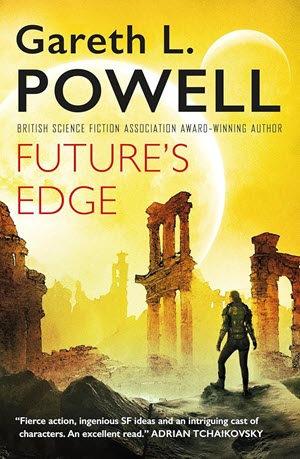
 Those of you who follow me on BlueSky will remember me posting about my visit to the Mediaeval Women exhibition at the British Library. As social media is rather ephemeral, I will recap some of what I said here, but mainly this is a review of the book of the exhibition.
Those of you who follow me on BlueSky will remember me posting about my visit to the Mediaeval Women exhibition at the British Library. As social media is rather ephemeral, I will recap some of what I said here, but mainly this is a review of the book of the exhibition.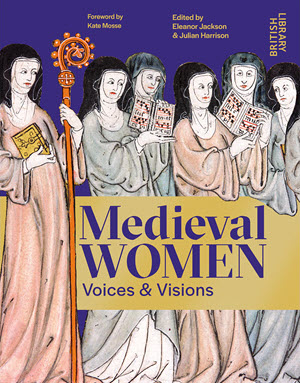
 These days Aliette de Bodard’s books are best known for their themes of Sapphic romance. That’s not really my thing, but if it wins her extra sales I’m all in favour because it means that more people are reading interesting SF.
These days Aliette de Bodard’s books are best known for their themes of Sapphic romance. That’s not really my thing, but if it wins her extra sales I’m all in favour because it means that more people are reading interesting SF.
 Bringing animals back from extinction has been a fascination of science fiction at least since Jurassic Park, probably much longer. Usually what people want is dinosaurs, but the wooly mammoth also holds a significant place in the human imagination, and resurrecting it seems slightly less unlikely.
Bringing animals back from extinction has been a fascination of science fiction at least since Jurassic Park, probably much longer. Usually what people want is dinosaurs, but the wooly mammoth also holds a significant place in the human imagination, and resurrecting it seems slightly less unlikely.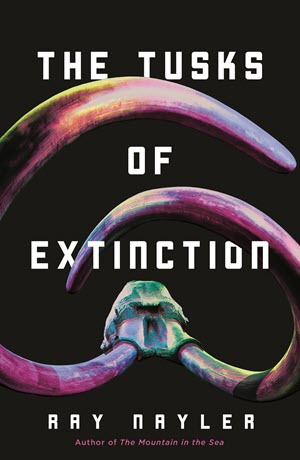
 This review was first published on Cheryl’s blog in June 2016.
This review was first published on Cheryl’s blog in June 2016.
 Air Canada’s offerings on my trips this month were underwhelming. That wasn’t for any lack of choice. There were huge numbers of films and TV shows that I could have watched; but there were very few that I actually wanted to see. I mean, I could have re-watched the entire Peter Jackson Lord of the Rings series which, with the addition of The War of the Rohirrim, is now up to 7 films. I could have re-watched all four Matrix films. I did re-watch Jupiter Ascending, but only once out of four flights. What was lacking was something new that I actually wanted to see, and that was as much the fault of Hollywood as anyone else.
Air Canada’s offerings on my trips this month were underwhelming. That wasn’t for any lack of choice. There were huge numbers of films and TV shows that I could have watched; but there were very few that I actually wanted to see. I mean, I could have re-watched the entire Peter Jackson Lord of the Rings series which, with the addition of The War of the Rohirrim, is now up to 7 films. I could have re-watched all four Matrix films. I did re-watch Jupiter Ascending, but only once out of four flights. What was lacking was something new that I actually wanted to see, and that was as much the fault of Hollywood as anyone else. Now that the rich mine of Middle Earth has been opened up for exploitation, the corporations that have rights to exploit it are keen to do so as rapidly as possible before the movie-watching public gets bored. Rings of Power is at least nominally based on the events chronicled in The Silmarillion. The War of the Rohirrim is mostly just shameless recycling of previously used material.
Now that the rich mine of Middle Earth has been opened up for exploitation, the corporations that have rights to exploit it are keen to do so as rapidly as possible before the movie-watching public gets bored. Rings of Power is at least nominally based on the events chronicled in The Silmarillion. The War of the Rohirrim is mostly just shameless recycling of previously used material.


 This is the February 2025 issue of Salon Futura. Here are the contents.
This is the February 2025 issue of Salon Futura. Here are the contents. The Practice, the Horizon and the Chain
The Practice, the Horizon and the Chain Kaos
Kaos The Dead Cat Tail Assassins
The Dead Cat Tail Assassins Adwaith – Solas
Adwaith – Solas Mapping Middle Earth
Mapping Middle Earth The Substance
The Substance Gŵyl y Golau
Gŵyl y Golau Fantasy News & Lifestyle Magazine
Fantasy News & Lifestyle Magazine Hugo Voting Time
Hugo Voting Time Section 31
Section 31 Continuing our theme of raiding the free image collection provided by the British Library, here we have a fantasy-themed cover. The image is titled, ‘The Dragon’s Den’ and it comes from Among the Gnomes. An occult tale of adventure in the Untersberg by Franz Hartmann. The book was published in 1895 by T Fisher Unwin. The illustrator is known as Sedgwick, but I haven’t found out any more about them. There is a version of the book available
Continuing our theme of raiding the free image collection provided by the British Library, here we have a fantasy-themed cover. The image is titled, ‘The Dragon’s Den’ and it comes from Among the Gnomes. An occult tale of adventure in the Untersberg by Franz Hartmann. The book was published in 1895 by T Fisher Unwin. The illustrator is known as Sedgwick, but I haven’t found out any more about them. There is a version of the book available 
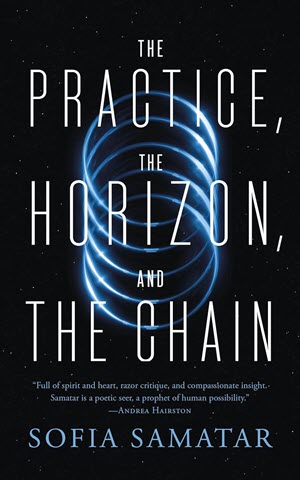 The title of this novella from Sophia Samatar gives you no clue as to what it is about. The cover does not help. In starting to read through you understand that the book is set on a space ark of some sort. That is not what the book is about at all.
The title of this novella from Sophia Samatar gives you no clue as to what it is about. The cover does not help. In starting to read through you understand that the book is set on a space ark of some sort. That is not what the book is about at all.
 I’m a bit behind with this one due to the large quantity of interesting TV demanding my time. When it first came out, my Classicist friends were absolutely delighted about it. I can see why. I can also see why it was not renewed.
I’m a bit behind with this one due to the large quantity of interesting TV demanding my time. When it first came out, my Classicist friends were absolutely delighted about it. I can see why. I can also see why it was not renewed. In the prosperous merchant city of Tal Abisi there is a flourishing trade in assassination. Among the guilds of assassins, the Dead Cat Tails are generally acknowledged to be the best. And among the Dead Cat Tails, Eveen the Eviscerator is one of their star performers. This means that she gets some of the most interesting and challenging commissions.
In the prosperous merchant city of Tal Abisi there is a flourishing trade in assassination. Among the guilds of assassins, the Dead Cat Tails are generally acknowledged to be the best. And among the Dead Cat Tails, Eveen the Eviscerator is one of their star performers. This means that she gets some of the most interesting and challenging commissions.
 Adwaith are a three-piece all-girl band from South Wales. They were founded by Hollie Singer and Gwenllian Anthony, who were school friends in Carmarthen. With a couple of successful albums behind them, some appearances at Glastonbury, and support work for the likes of the Manics and Idles, they have done that thing that many newly successful bands do: spend two years in the studio.
Adwaith are a three-piece all-girl band from South Wales. They were founded by Hollie Singer and Gwenllian Anthony, who were school friends in Carmarthen. With a couple of successful albums behind them, some appearances at Glastonbury, and support work for the likes of the Manics and Idles, they have done that thing that many newly successful bands do: spend two years in the studio. One of many great things about the Perspectives on Fantasy series from the Glasgow University Fantasy Centre is that their contract with Bloomsbury requires the publisher to produce paperback editions at affordable prices. You have to wait a year from initial publication for the paperback to appear, but once it has you should be able to get it for around £25. Or, having waited a year already, you can wait a little longer for Bloomsbury to have a sale. Which is how I ended up getting a copy of Mapping Middle Earth for just over £20.
One of many great things about the Perspectives on Fantasy series from the Glasgow University Fantasy Centre is that their contract with Bloomsbury requires the publisher to produce paperback editions at affordable prices. You have to wait a year from initial publication for the paperback to appear, but once it has you should be able to get it for around £25. Or, having waited a year already, you can wait a little longer for Bloomsbury to have a sale. Which is how I ended up getting a copy of Mapping Middle Earth for just over £20.
 I’m going to make a new movie list called “One-Watch Masterpieces”, and I’ll tell you why. There’s not many lists out there like that. Sure, there’s probably a
I’m going to make a new movie list called “One-Watch Masterpieces”, and I’ll tell you why. There’s not many lists out there like that. Sure, there’s probably a  When people think of the Celtic religious calendar (which is largely a modern artefact), they tend to think in terms of Irish festivals. Thus February 1st is known as Imbolc (or for Christians, Saint Brigid’s Day). But Wales has its own traditions which do not map exactly onto the Irish ones, and which have their own names.
When people think of the Celtic religious calendar (which is largely a modern artefact), they tend to think in terms of Irish festivals. Thus February 1st is known as Imbolc (or for Christians, Saint Brigid’s Day). But Wales has its own traditions which do not map exactly onto the Irish ones, and which have their own names. I don’t often post magazine reviews here, but Fantasy News & Lifestyle is new and from Germany. There are seven issues available in German, but the two most recent are also in English. So what’s going on in Fantasy in Germany?
I don’t often post magazine reviews here, but Fantasy News & Lifestyle is new and from Germany. There are seven issues available in German, but the two most recent are also in English. So what’s going on in Fantasy in Germany? OK, so Hugo voting is now open. So is the Locus Poll. I should have some thoughts, despite the fact that I still have a whole lot of books that I want to read.
OK, so Hugo voting is now open. So is the Locus Poll. I should have some thoughts, despite the fact that I still have a whole lot of books that I want to read. Well I can’t say that y’all didn’t warn me. But I watched it anyway. You were right, Section 31 is terrible. Let me count the ways…
Well I can’t say that y’all didn’t warn me. But I watched it anyway. You were right, Section 31 is terrible. Let me count the ways…
 This is the January 2025 issue of Salon Futura. Here are the contents.
This is the January 2025 issue of Salon Futura. Here are the contents. We Are All Ghosts in the Forest
We Are All Ghosts in the Forest Triggernometry Finals
Triggernometry Finals Sundown in San Ojuela
Sundown in San Ojuela The New Moon’s Arms
The New Moon’s Arms Skeleton Crew
Skeleton Crew Aquaman 2
Aquaman 2 What If? – Season 3
What If? – Season 3 This issue we continue with the new practice of finding covers amongst the British Library’s collection of illustrations from old books. The picture in question was included in a 1893 novel called
This issue we continue with the new practice of finding covers amongst the British Library’s collection of illustrations from old books. The picture in question was included in a 1893 novel called 
 In the east of Estonia, not too far from the Russian border, is a small village. When the world fell apart, and she could no longer earn a living as a photographer, Katerina went there to live there because the village had been her grandmother’s home. There was a house there she could have. And perhaps neighbours.
In the east of Estonia, not too far from the Russian border, is a small village. When the world fell apart, and she could no longer earn a living as a photographer, Katerina went there to live there because the village had been her grandmother’s home. There was a house there she could have. And perhaps neighbours.
 All good things must come to an end. In the case of an extended pun that has already produced two short books, Triggernometry is probably more overdue than most. And yet, somehow Stark Holborn has managed to squeeze a little more life out of a very silly idea.
All good things must come to an end. In the case of an extended pun that has already produced two short books, Triggernometry is probably more overdue than most. And yet, somehow Stark Holborn has managed to squeeze a little more life out of a very silly idea.
 Horror is not normally my thing. I very rarely read it. But the prospect of a book by a Mexican trans woman was too much to resist. Besides, MM Olivas has been mentored by none other than Nalo Hopkinson. She has to be good, right?
Horror is not normally my thing. I very rarely read it. But the prospect of a book by a Mexican trans woman was too much to resist. Besides, MM Olivas has been mentored by none other than Nalo Hopkinson. She has to be good, right?
 I was looking for some SF&F to recommend to some local PoC friends, and naturally one of my first thoughts was of Nalo Hopkinson. Given that said friends are also a lesbian couple, and one is from the Caribbean, I zeroed in on The New Moon’s Arms. Then I discovered that I had never reviewed it, so I re-read the whole thing.
I was looking for some SF&F to recommend to some local PoC friends, and naturally one of my first thoughts was of Nalo Hopkinson. Given that said friends are also a lesbian couple, and one is from the Caribbean, I zeroed in on The New Moon’s Arms. Then I discovered that I had never reviewed it, so I re-read the whole thing.
 Kudos, I guess, to the Star Wars folks for trying something different. And lots of people seem to have enjoyed Skeleton Crew. My take on it is somewhat more ambivalent.
Kudos, I guess, to the Star Wars folks for trying something different. And lots of people seem to have enjoyed Skeleton Crew. My take on it is somewhat more ambivalent. I did not go to see this film in the cinema. I waited to buy it on disc until it was a bit cheaper. I did not have high expectations, but I hoped that there would be more giant war crabs.
I did not go to see this film in the cinema. I waited to buy it on disc until it was a bit cheaper. I did not have high expectations, but I hoped that there would be more giant war crabs. This is the final season of Marvel’s What If? animation series, and not before time because the creative team has clearly run out of steam. Where the series used to do interesting things with existing parts of the MCU, it has now been relegating largely to promoting forthcoming bad ideas (Thunderbolts) and past disasters (Eternals).
This is the final season of Marvel’s What If? animation series, and not before time because the creative team has clearly run out of steam. Where the series used to do interesting things with existing parts of the MCU, it has now been relegating largely to promoting forthcoming bad ideas (Thunderbolts) and past disasters (Eternals).
 This is the November 2024 issue of Salon Futura. Here are the contents.
This is the November 2024 issue of Salon Futura. Here are the contents. The Tapestry of Time
The Tapestry of Time The Nightward
The Nightward Welsh Giants, Ghosts and Goblins
Welsh Giants, Ghosts and Goblins Helen Brady Interview
Helen Brady Interview Fantastika 2024
Fantastika 2024 Agatha All Along
Agatha All Along Deadpool and Wolverine
Deadpool and Wolverine There’s a change of policy with the cover art this issue. Sadly the free art on PixaBay has been swamped by AI crap, and there doesn’t appear to be any easy way to filter it out in searches. So instead I am using art from the public domain images collection of the British Library. The plan is to find illustrations from science fiction and fantasy books. I hope you’ll find the results interesting.
There’s a change of policy with the cover art this issue. Sadly the free art on PixaBay has been swamped by AI crap, and there doesn’t appear to be any easy way to filter it out in searches. So instead I am using art from the public domain images collection of the British Library. The plan is to find illustrations from science fiction and fantasy books. I hope you’ll find the results interesting.
 I’m a sucker for a good secret history. There are, of course, a lot of bad ones out there, but I’m happy to report that the latest novel from Kate Heartfield is a fine example of the genre.
I’m a sucker for a good secret history. There are, of course, a lot of bad ones out there, but I’m happy to report that the latest novel from Kate Heartfield is a fine example of the genre.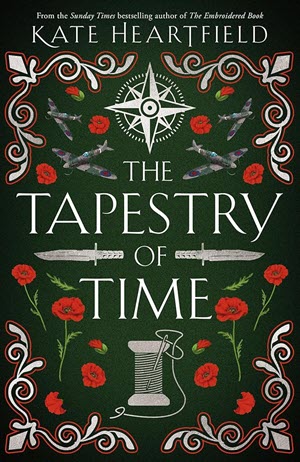
 I’m delighted to see the career of RSA Garcia flourishing. Aside from her being an SF&F author, we talk a lot about cricket on social media. She won this year’s Sturgeon Award for ‘Tantie Merle and the Farmhand 4200’, an engaging tale of an old lady, a farm robot and a goat. The Nightward is her second novel. The first was Lex Talionis, about which I interviewed her for Ujima Radio some ten years ago.
I’m delighted to see the career of RSA Garcia flourishing. Aside from her being an SF&F author, we talk a lot about cricket on social media. She won this year’s Sturgeon Award for ‘Tantie Merle and the Farmhand 4200’, an engaging tale of an old lady, a farm robot and a goat. The Nightward is her second novel. The first was Lex Talionis, about which I interviewed her for Ujima Radio some ten years ago. 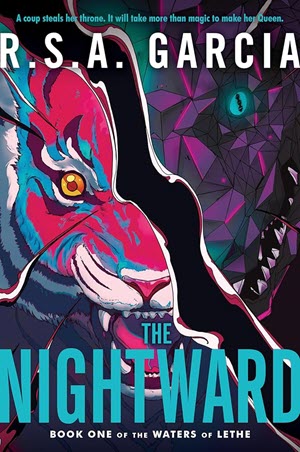
 Waterstones has an award for Welsh Book of the Year. Who knew? Not me, until this year, when the winning title was clearly something of interest to me. Much of the credit here should go to Stephanie Burgis who has been enthusing about the book for some time. I think she also knows the author, Claire Fayers.
Waterstones has an award for Welsh Book of the Year. Who knew? Not me, until this year, when the winning title was clearly something of interest to me. Much of the credit here should go to Stephanie Burgis who has been enthusing about the book for some time. I think she also knows the author, Claire Fayers.